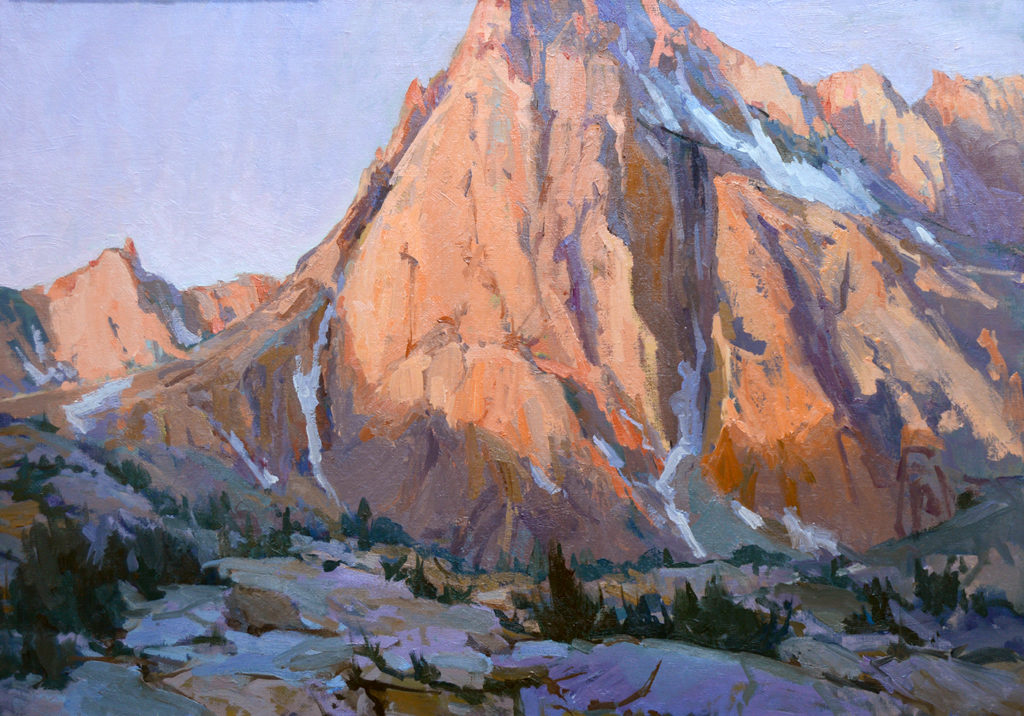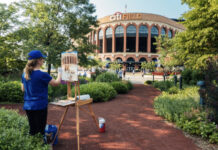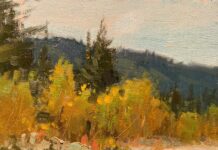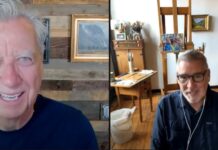Artist Lori Putnam speaks on the role artists can play in the conservation and preservation of land, cultures, and buildings. Here, she explains the “why” of artists and conservancy.
BY LORI PUTNAM
For the past several months I have been sharing specific conservancy efforts in which I have had the great fortune to be personally involved. In this installment, I want to explore exactly why it really matters. The hope is that each of you will become more interested and seek ways that you can help preserve our planet and its beauty for future generations.

Up until now, we have focused solely on how the land itself needs our help. But what about how very much we need the land? Not just in terms of producing food and fresh water, but in terms of our state of well-being. Much research has been and is being done with regard to the effects of the presence of artwork (peaceful landscapes in particular) on the aged, mentally ill, hospitalized, and dying.
A simple web search nets page after page of links to credible sources, reports, and stories. There are studies and projects using art as a means to bring violent neighborhoods to peace, broken children to hope, and failing students to better understanding. I for one certainly appreciate that my dentist has a beautiful Hawaiian scene plastered on the ceiling above the exam chair.
Love painting outdoors? Sign up for the Plein Air Today newsletter at http://bit.ly/PleinAirTodayNewsletter for inspiration delivered to your inbox.
So, then, what impact might the way we see, interpret, and share our paintings of nature have on others? I remember when I was first beginning to find venues to exhibit my paintings. Early-stages exhibition opportunities are sometimes found in the least flattering places. Some of my personal experiences have included hair salons, coffee shops, and medical offices. One of my earliest exhibits (and I use the term exhibit very loosely) was in a grade-school cafeteria, where my paintings took on the aroma of Tater Tots, canned spaghetti sauce, and spilled milk.
The day I came to pick up the work, a special needs student just happened to be walking by as I was taking down the show. Having a special needs child of my own, I was curious if he would notice any of the pieces. He stopped and walked up to one of the paintings full of garishly painted fall trees. His whole presence totally changed. He responded to the color and immediately smiled and looked extremely happy. His aide told me how very rare it was for him to show any emotion at all, let alone smile. I will never forget that, and I can promise you it affected me so much more than it did him.
“Working outdoors or from life puts you in direct contact with the life force, not just the light and the landscape, but also the vitality of the world around you.” — George Carlson
As artists, we develop a different way of observing our world. We see so much more than just a subject. We recognize shapes, relationships, patterns, and color that the average passerby on the street may never notice. Textbook “beauty” may be obvious to non-painters who venture out into nature. No doubt hikers and campers appreciate the solitude and glory of a glacial lake at sunrise. For those of us who paint it, however, there is a visual memory quite different from those who snap a quick pic on their phones and hike on. We stand, in the moments, recording that space and time in a much deeper and more meaningful way. There is a part of our souls that opens up and spills out while simultaneously drinking in the world around us. We become partners with the land, and when we leave, a piece of it remains inside of us.

It has been a true blessing to hike into the Eastern Sierra for the past few years with friends. There is nothing quite like total silence in front of a magnificent scene like this. The poetry revealed through our hearts and our media is unique to each and every one of us on the trip, and the times we have experienced with each other and the surroundings have changed me forever. Each painter’s creation and his or her soulful connection to the scene are greater together than the land or the painter could ever be individually. To me, it is a spiritual experience that changes both the artist and the perception or idea of that place forever. Once we share our work with others, the place is also changed in the viewer’s mind as well.

With a 20 percent increase in wildfires over the past 35 years, gross mismanagement of natural water resources, budget cuts reducing staff to our parks, record-setting temperature extremes, and drought, our job is huge, and attention to it is long overdue. The threat that there will be little left for our children and grandchildren and for landscape artists in the future is real. If paintings of mountains and sunrises can actually heal our minds and bodies and bring about peace, what hope is there for those things if the paintings are gone?

I implore you to earnestly search for a way to make the world around you a better place now and forever. Get involved in issues that matter in your area. Join (or start) a conservancy-focused painting group. Offer your time and talent to educate and share beauty with others using your work as visual stimulus. At the very least, be good stewards of all we have; it is our duty. Spill out and drink in and share your soul.
See you out there.
(This article was originally published in 2017, and is still relevant today)
***
Learn how to use Bold Brushstrokes and Confident Color with Lori Putnam’s instructional painting DVD. Preview it here:
Visit EricRhoads.com to find out all the amazing opportunities for artists through Streamline Publishing, including:
– Online art conferences such as Plein Air Live
– New video workshops for artists
– Incredible art retreats
– Educational and fun art conventions, and much more.
> Subscribe to Plein Air Today, a free newsletter for artists
> Subscribe to PleinAir Magazine so you never miss an issue






